Timbuk2 Wingman Travel Backpack Duffel Review
The Timbuk2 Wingman Travel Backpack Duffel’s mesh compression panel effectively locks in clothing—a handy alternative if you’re not a fan of packing cubes.
Our Verdict
Save time. Get access to brief summaries of our reviews so you can browse and make decisions more efficiently.
Pros
- Simple harness system has surprisingly effective hip belt
- Built-in mesh compression panel helps contain clothing without packing cubes
- Second laptop compartment is handy for additional tech like a large tablet
Cons
- Tricky to get big water bottles into bottle pocket’s overhead space
- Mesh compression panel is not removable and can get in the way
- Uncomfortable to carry as a crossbody duffle
Technical Details
-
Capacity
38.3l
-
Weight (lb)
4 lb (1.8 kg)
-
Dimensions
22 in x 12.6 in x 7.87 in (55.9 x 32 x 20 cm)
When worn as a backpack
-
Notable Materials
CORDURA®, Canvas, Polyurethane (PU), YKK Zippers, Duraflex Hardware, Paracord
-
Manufacturing Country
Indonesia
-
Laptop Compartment Size
17"
plus another 13-in laptop pocket
-
Warranty Information
Full Review
Timbuk2’s Wingman Travel Backpack Duffel combines a duffle bag and a travel backpack. That much is obvious based on the name alone. It’s not a new concept either, as we’ve seen it in bags like The North Face Base Camp Voyager 32L and Patagonia’s Black Hole Duffel Bag 40L. So what makes Timbuk2’s take interesting?
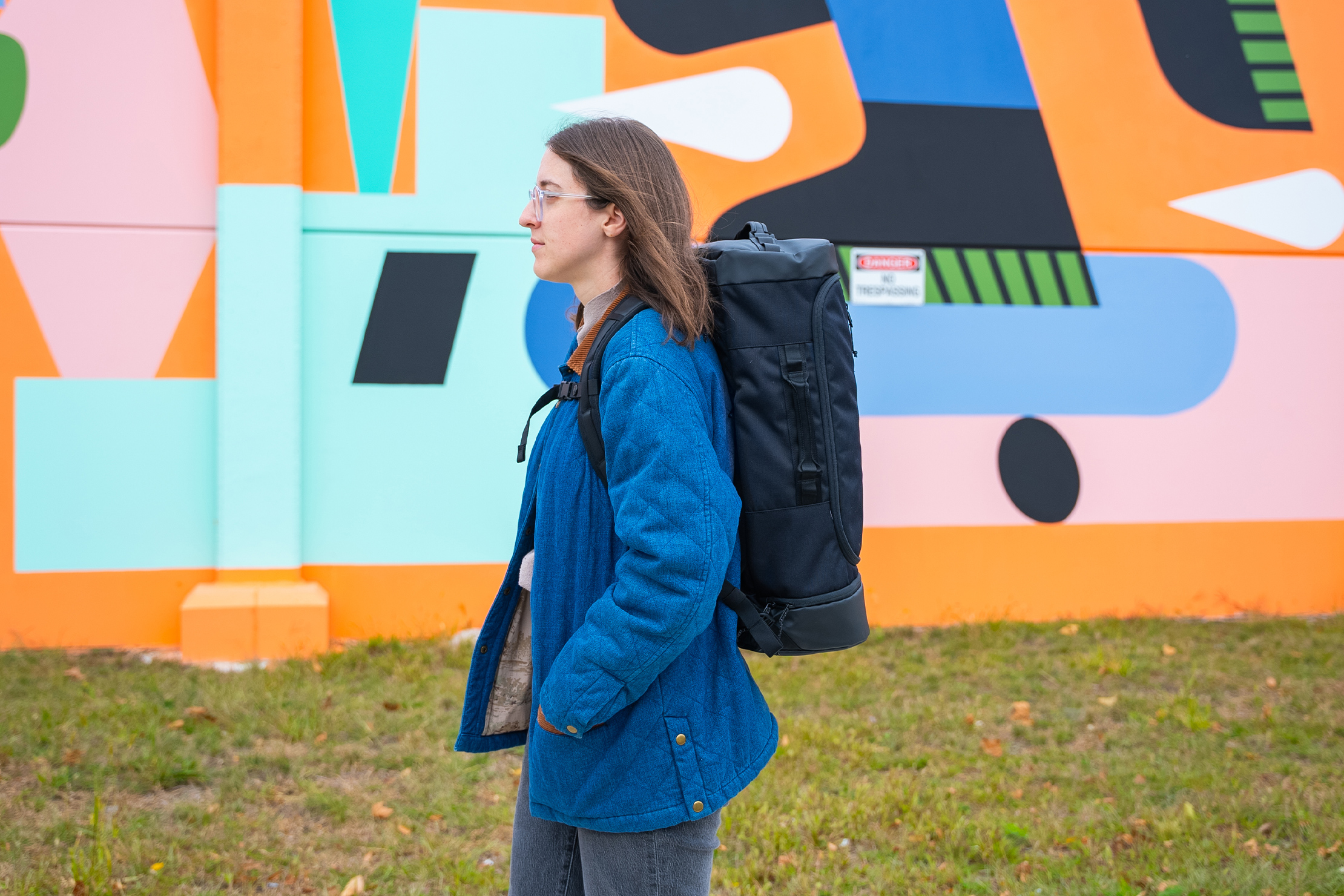
Two features stand out to us: having two dedicated laptop compartments and a built-in mesh compression panel that helps keep the weight locked in. The latter piques our interest since it potentially supplants the need for compression packing cubes. As for the dual laptop compartments, that potentially makes the digital nomads among you sit up in anticipation. So, without further ado, let’s dive in.
External Components
Timbuk2’s bags have always struck us as leaning more toward practicality with less emphasis on looks and styling. Yes, the brand’s not exactly shining a spotlight on the Wingman by draping it in flashy colorways, but that’s okay. The sheer size already gives it enough presence, with the all-black colorway accentuating—not subduing—its huge proportions. That said, does this 38.3-liter colossus have the substance to back it up?

It does, though Timbuk2’s website doesn’t say what makes the Wingman feel as tough as it looks. So, we asked, and they said that the main fabric is a CORDURA® canvas, while some parts, notably the ends, are rubberized nylon. The former doesn’t feel as abrasion-resistant as ballistic nylon, but it’s done a good job thus far without catastrophic damage throughout our testing. The rubberized nylon has fared relatively well, too, and has no scuffs. We expected at least a handful since the rubbery texture feels awfully similar to other TPU and TPU-coated materials used on other bags—bags that would often scuff as soon as you set them on the pavement.
The most noteworthy issue we’ve had with the Wingman’s fabric is pet hair sticking to it. It isn’t up to velvet-level terrible, but we do have to take a lint roller to it once in a while. In other words, it’s not a deal-breaker.
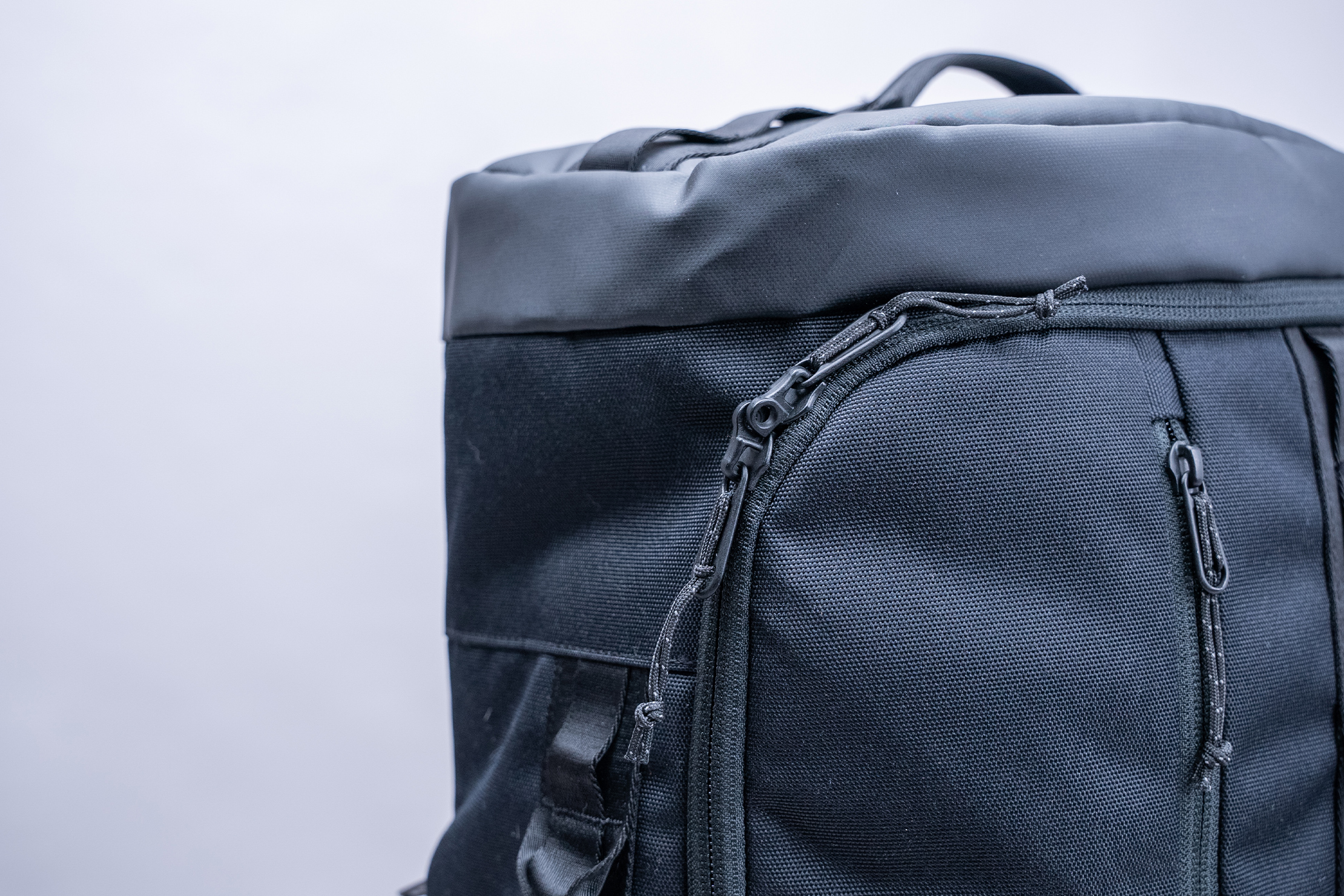
Most of the Wingman’s sides have handles, including the top, sides, and front. None of them appear especially thick, nor are any of them super padded for added comfort. However, we dig using the front one a lot. Surprisingly, not many duffles actually have a front-mounted handle like this, even though it’s really useful for quickly grabbing and moving the Wingman across short distances—think across a room or from a car trunk to the backseat.
Flanking the front handle are three loops on each side. You can use these to hang extra accessories like luggage tags, carabiners, or travel souvenirs—or all three if you really want to (we won’t judge). Just keep in mind that the weight of those accessories you’re attaching can make it hard to open and close the main compartment. Still, a few playful accessories might liven up the Wingman’s otherwise slightly “tacticool” look.
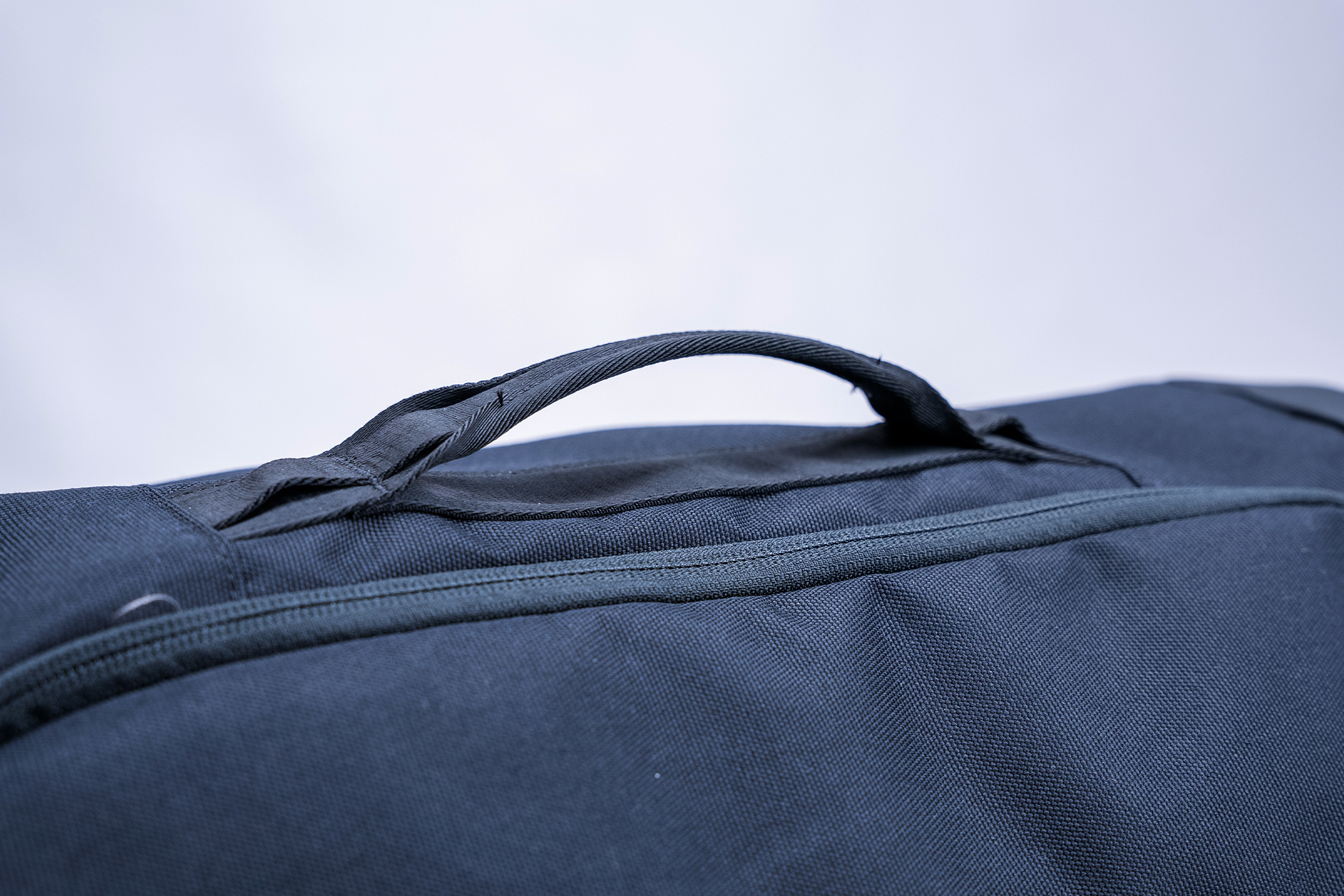
The Wingman’s backpack straps are relatively simple despite the large 38.3-liter size of the whole unit. You won’t find extras like load lifters or a shiftable back panel here like you would with the Salkan Backpacker. Instead, you get two decently padded shoulder straps, which detach on one end so you can stuff them into the space behind the back panel.
For support, there’s a sternum strap mounted on loops. While it doesn’t deliver quite the granularity of a sliding rail system found with other backpacks’ sternum straps, it gets the job done, so we won’t gripe about it too much. Additionally, there’s also a hip belt stuffed into small pockets below. The included padding isn’t very beefy, but you can move them for a better fit.
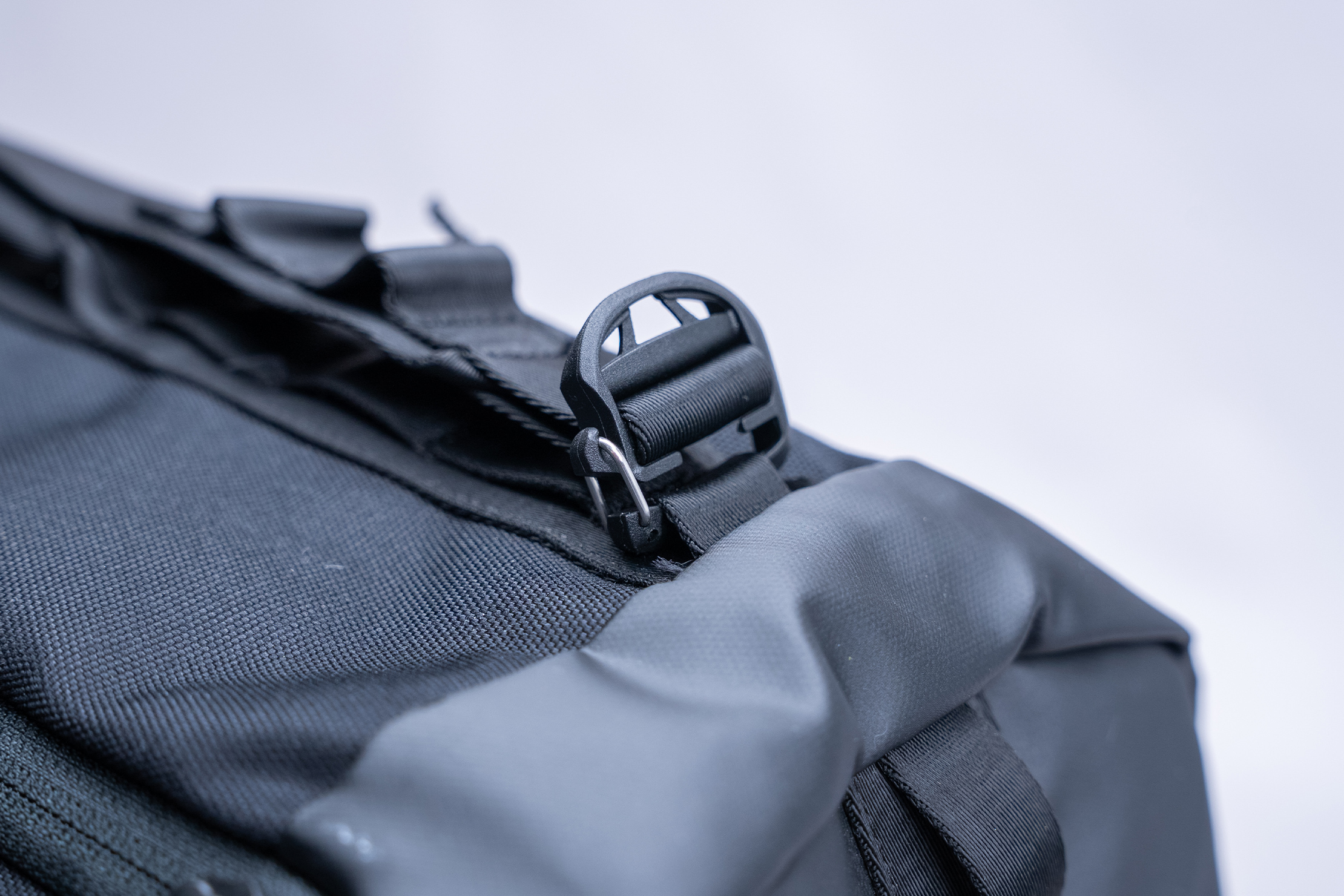
The shoulder straps and the hip belt are each stowable in their respective spaces. However, we found that tricky to do once the Wingman’s fully packed out. None of the spaces have much independent volume, so you really have to squeeze in the straps, which is not that easy considering the amount of padding you have to shove in. Plus, you can sort of feel the hip belt on your lower hip while carrying the Wingman on your back with it tucked away.
As its full name suggests, the Wingman can also be carried like a duffle via the included crossbody strap. It has a decently long pad that you can shift around and lets it stay in place on your shoulder. It’s adjustable through simple sliders, and there are gatekeeper clips to mount onto corresponding loops on the side of the Wingman itself.
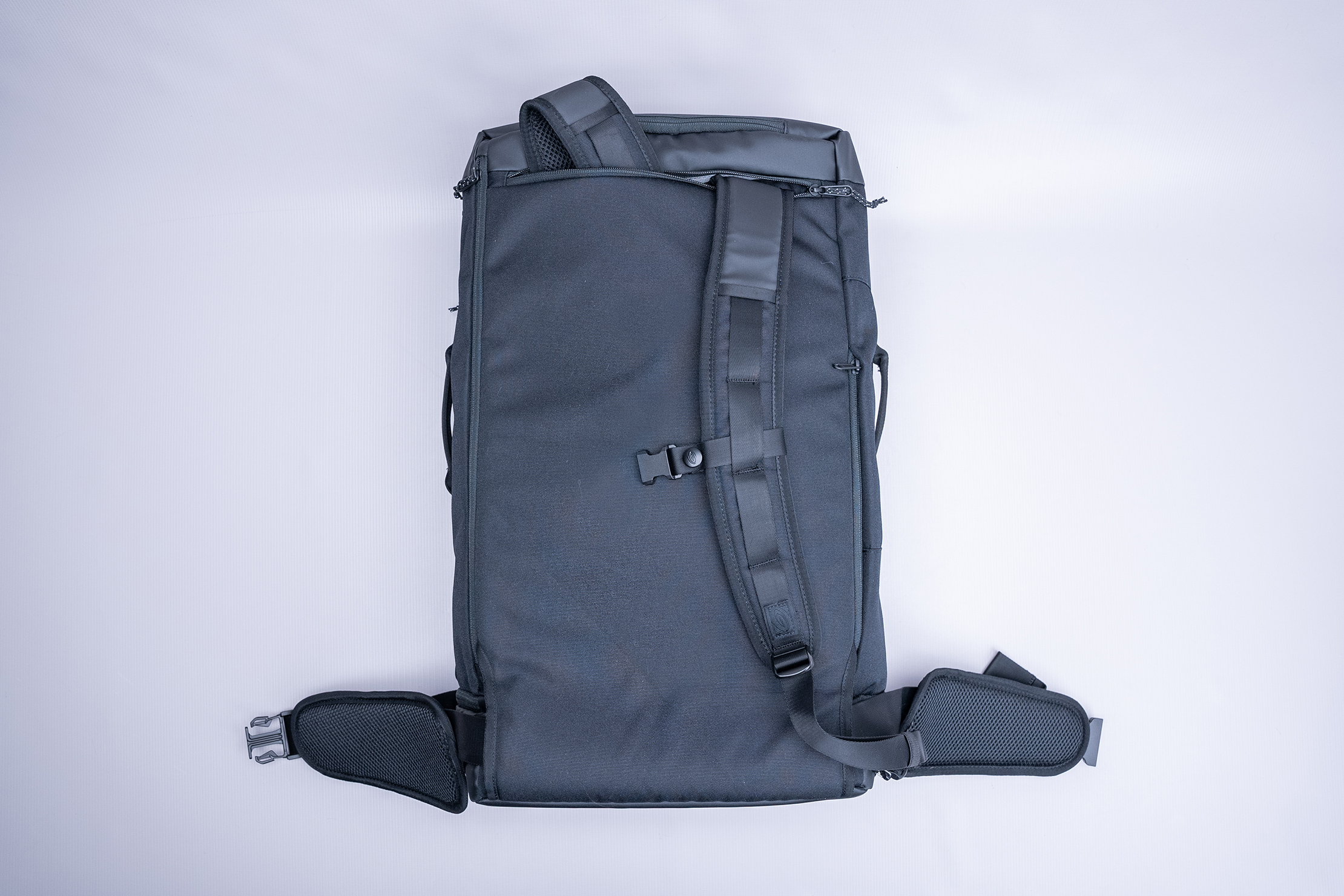
We’ve always had a love-hate relationship with gatekeeper clips (mostly hate). On the one hand, they’re pretty secure once they’re engaged. On the other hand, most of the ones we encounter are quite hard to engage. This is one of them, and even worse, there were occasions when we thought we’d locked them in, only for the clips to pop open later.
Fit Notes
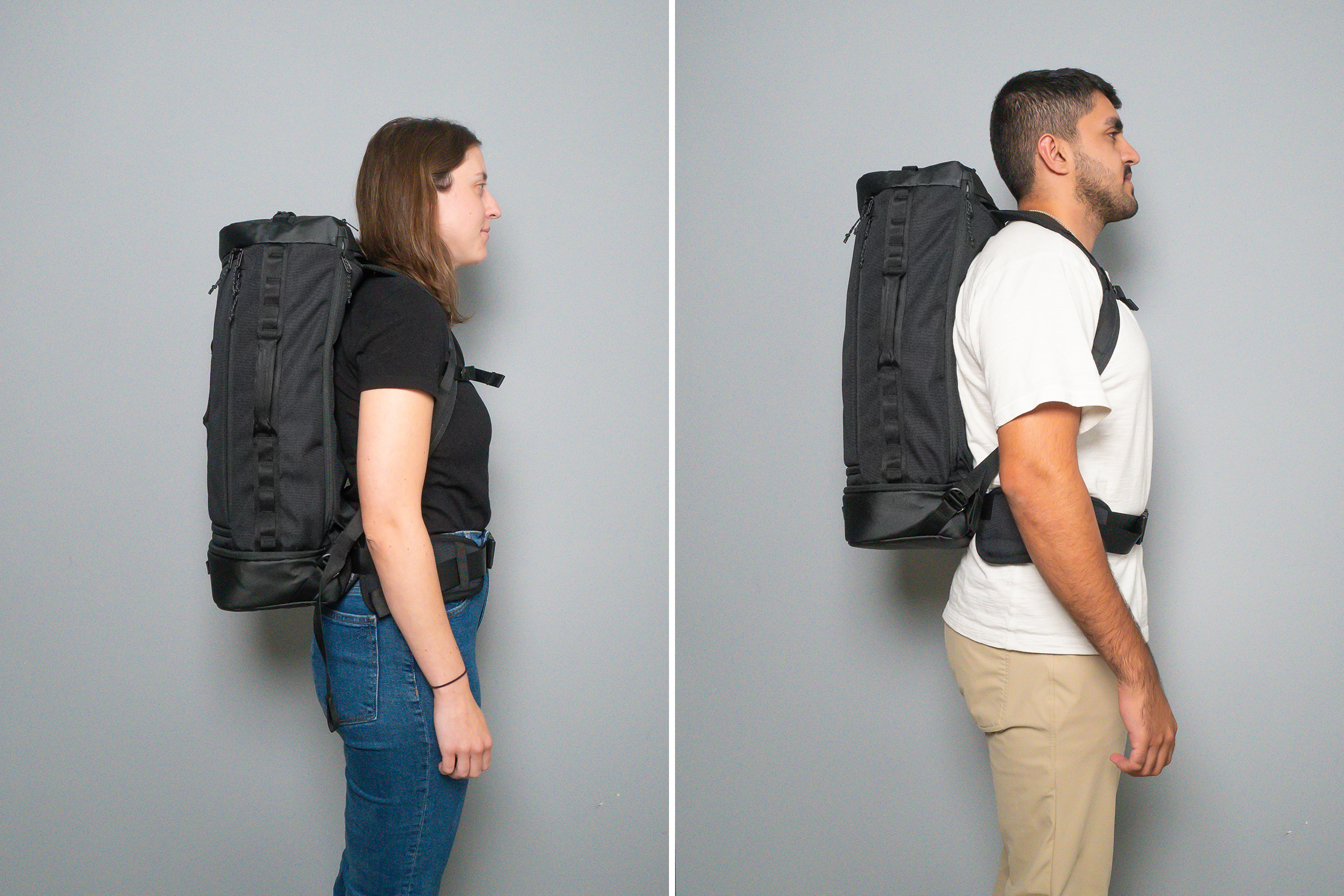
Timbuk2’s basic formula here, combining a pair of shoulder straps with a hip belt, proves sufficient. The shoulder straps’ ample padding cushions a fully packed loadout well enough despite the lack of supporting components like load lifters or a fancy shifting back panel. Between the sternum strap and the hip belt, we’re crediting the latter for having the most impact on comfort. Apart from the micro-adjustments courtesy of its movable padding, the hip belt simply does a good job offloading enough of the bag’s weight from the shoulder straps. The sternum strap also does its part in pulling closer to you, but it plays a more minor role overall.
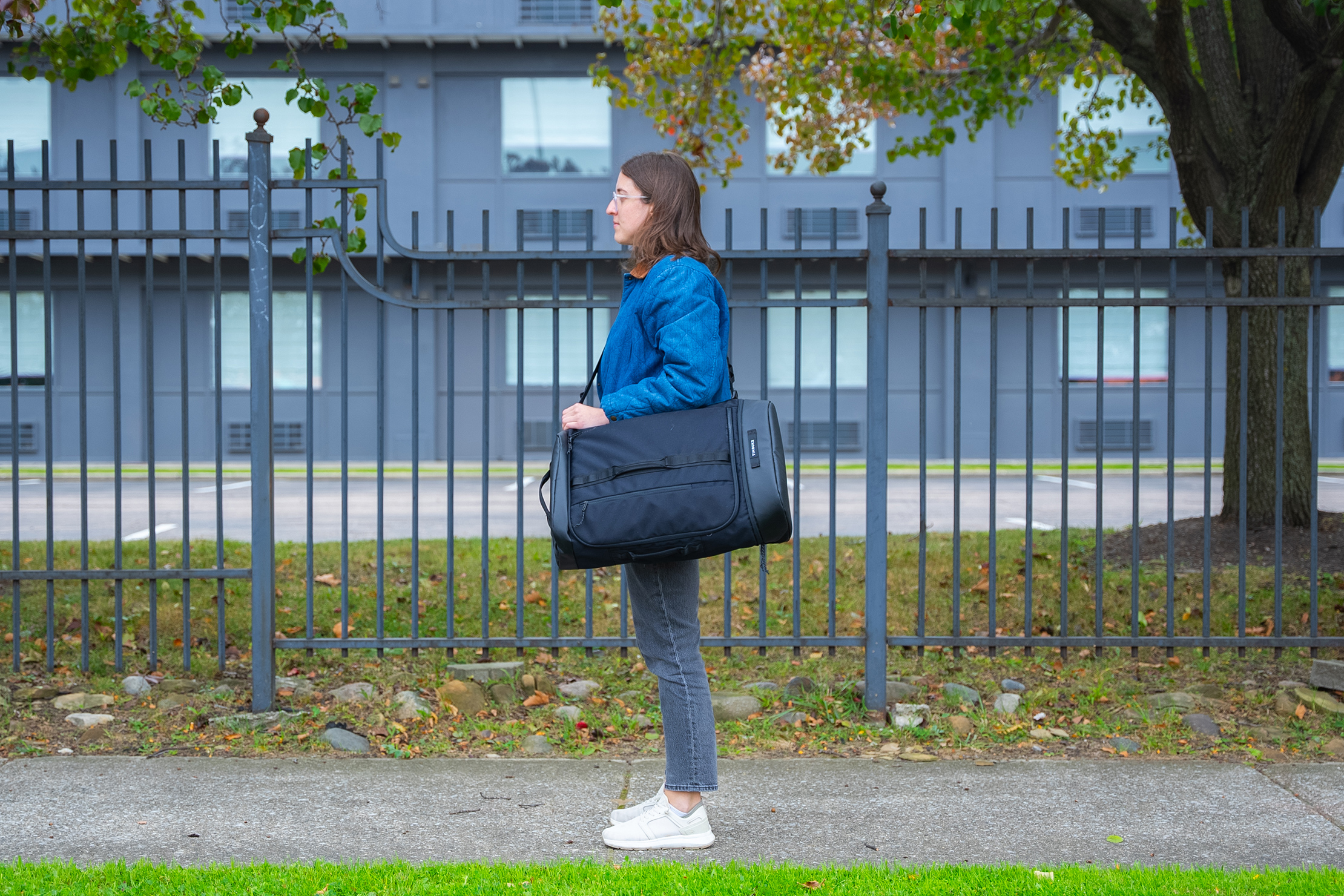
Duffle mode is a different story, however. Wearing the Wingman across your body with the included crossbody strap is uncomfortable. It’s not the strap’s fault, per se, since it’s decently padded. No, the issue boils down to two things: the Wingman’s shape and how the strap mounts along one side. Between these two factors, the Wingman feels like it seesaws on your hip. The strap itself also doesn’t shorten as much as we’d like so that stiff seesawing effect is slightly exacerbated on those with smaller frames. In other words, backpack mode is still our go-to for this bag.
Inside The Duffle
First among the Wingman’s many secondary pockets is the integrated water bottle pocket. Unlike the type that sticks out, this type essentially puts your bottle within the bag’s space. The downside is that it eats up usable capacity elsewhere, in this case, the main compartment. That’s not a big deal, though, since we’re used to seeing integrated water bottle pockets on many backpacks. The bigger issue is the pocket’s shape.
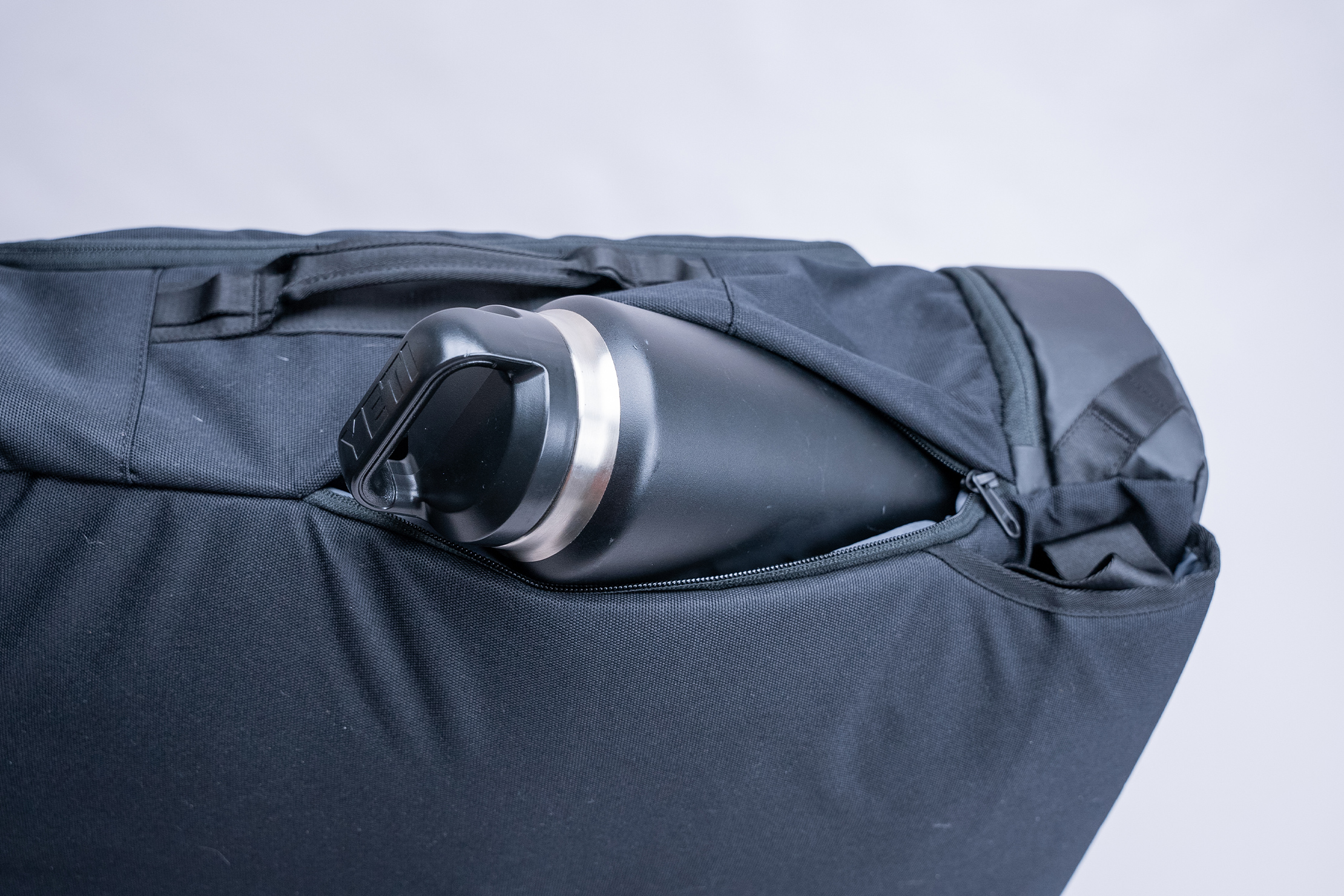
See, most of the space inside this pocket extends towards the top. It feels counter-intuitive since you’re ideally holding your bottle by the handle to maneuver it into the pocket. With most of that space overhead, you have to push your bottle from the base, which feels awkward most of the time. It also doesn’t help that the back panel’s frame sheet forms one of the edges of the opening, so you have to fight against that as well if you have an especially big bottle like the 36-ounce YETI Rambler.
Next up is the front pocket. It’s off-center, with a sideways opening that leads to a modest space, and is mostly suited for quick-grab items like keys, a wallet, earphones, and a smartphone. A built-in mesh pocket keeps those kinds of everyday carry items from falling too deep. Alternatively, there’s also a top pocket where we kept most of the quick-grab items we carried.
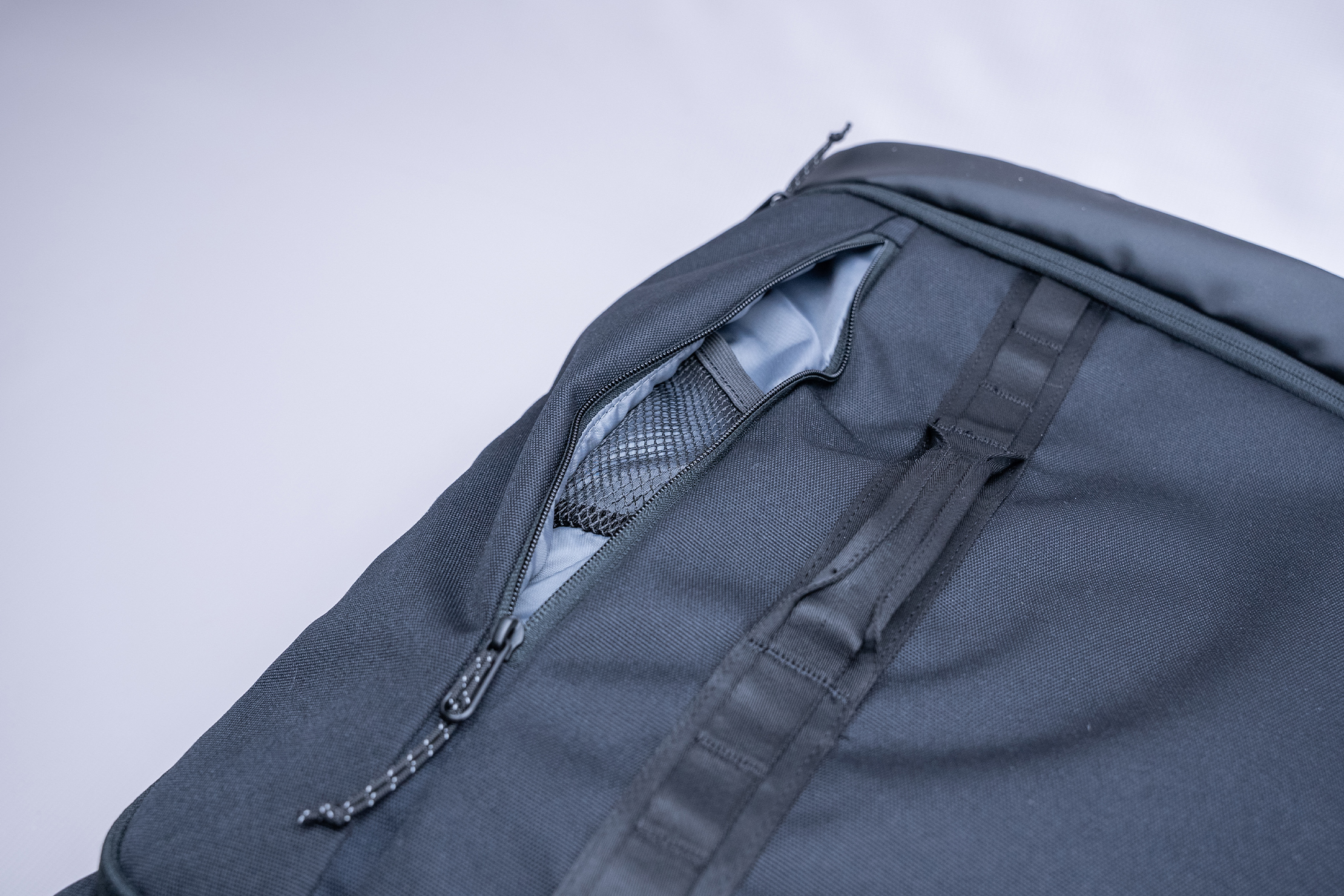
A key feature we like seeing on large travel bags like the Wingman is a dedicated shoe compartment. We like using a more relaxed kind of footwear when we’re flying, saving our fanciest (but often bulky) shoes for when we’re actually at our destination. Yes, we could use a shoe pouch and put them in the main compartment, but having that independent space offers more convenient access and less risk of contaminating the rest of our gear.
One of the more niche features of the Wingman is having two dedicated laptop compartments. Not that Timbuk2’s the first one to come up with the idea, but it’s definitely uncommon, even among travel bags. A zippered compartment for a 17-inch device is at the back, while the one at the front is designed for a 13-inch device. Having laptops in these compartments helps straighten out the Wingman when it’s bulging from being fully packed out, though that’s probably not optimal—it’s kind of like using sports cars for hauling gravel.
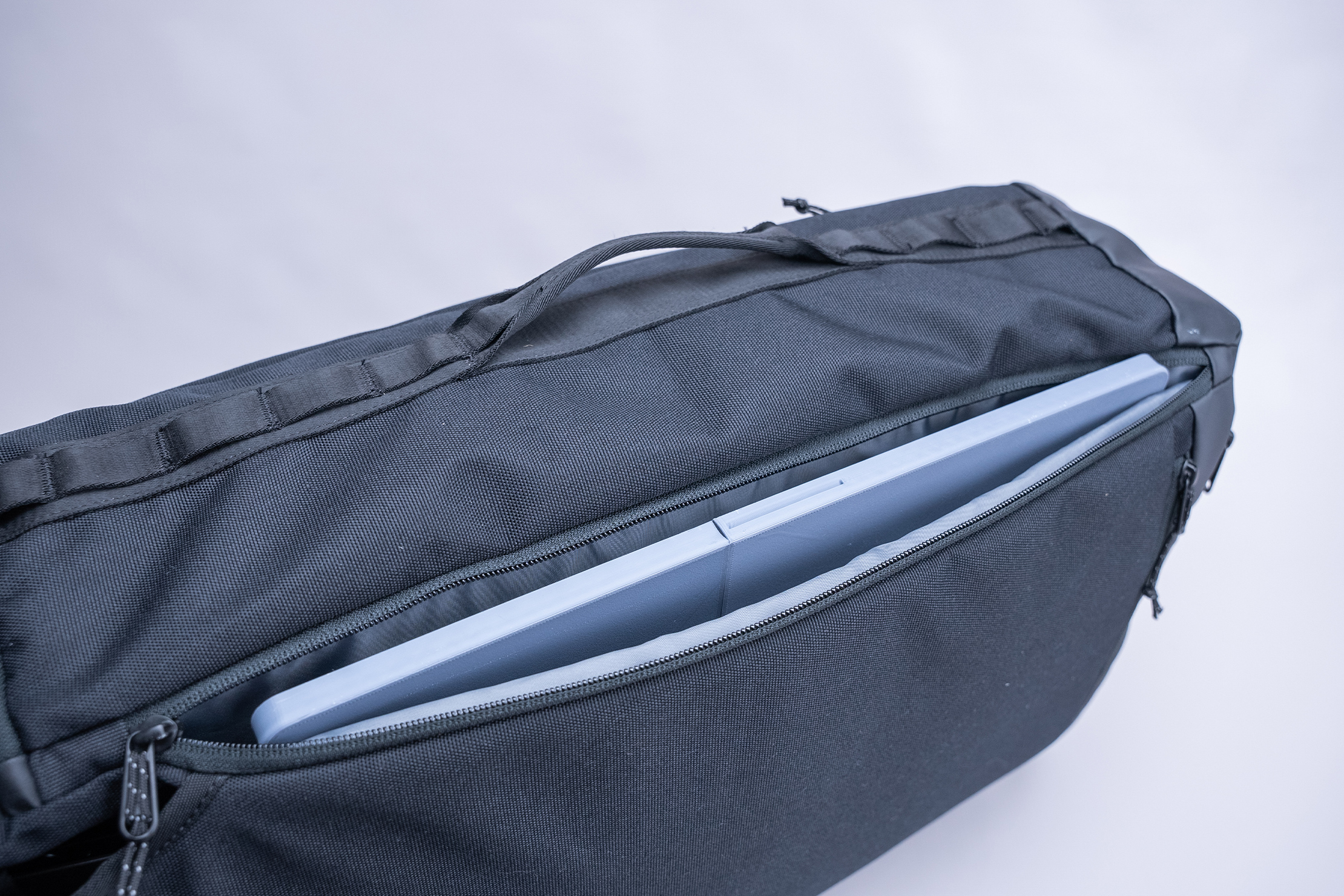
Carrying two laptops may not be your thing, and it’s not ours either. However, this is a potentially useful feature if you’re traveling with a portable external display, for example. We can also imagine using this for a large tablet like an iPad Pro, a drawing tablet, a small cooling pad, or even a travel-sized keyboard. In other words, you don’t have to use it as a laptop compartment at all.

Finally, we have the main compartment. Like many duffle bags, the Wingman’s main compartment opens via a zippered hatch that folds away to reveal a huge part of the interior. Though it’s not all immediately accessible since the sides have some overhang, we doubt anyone will have much trouble slotting clothing and/or packing cubes inside. There’s also a zippered mesh pocket on the hatch itself, which we’ve used to store smaller accessories like a beanie and a pair of gloves.
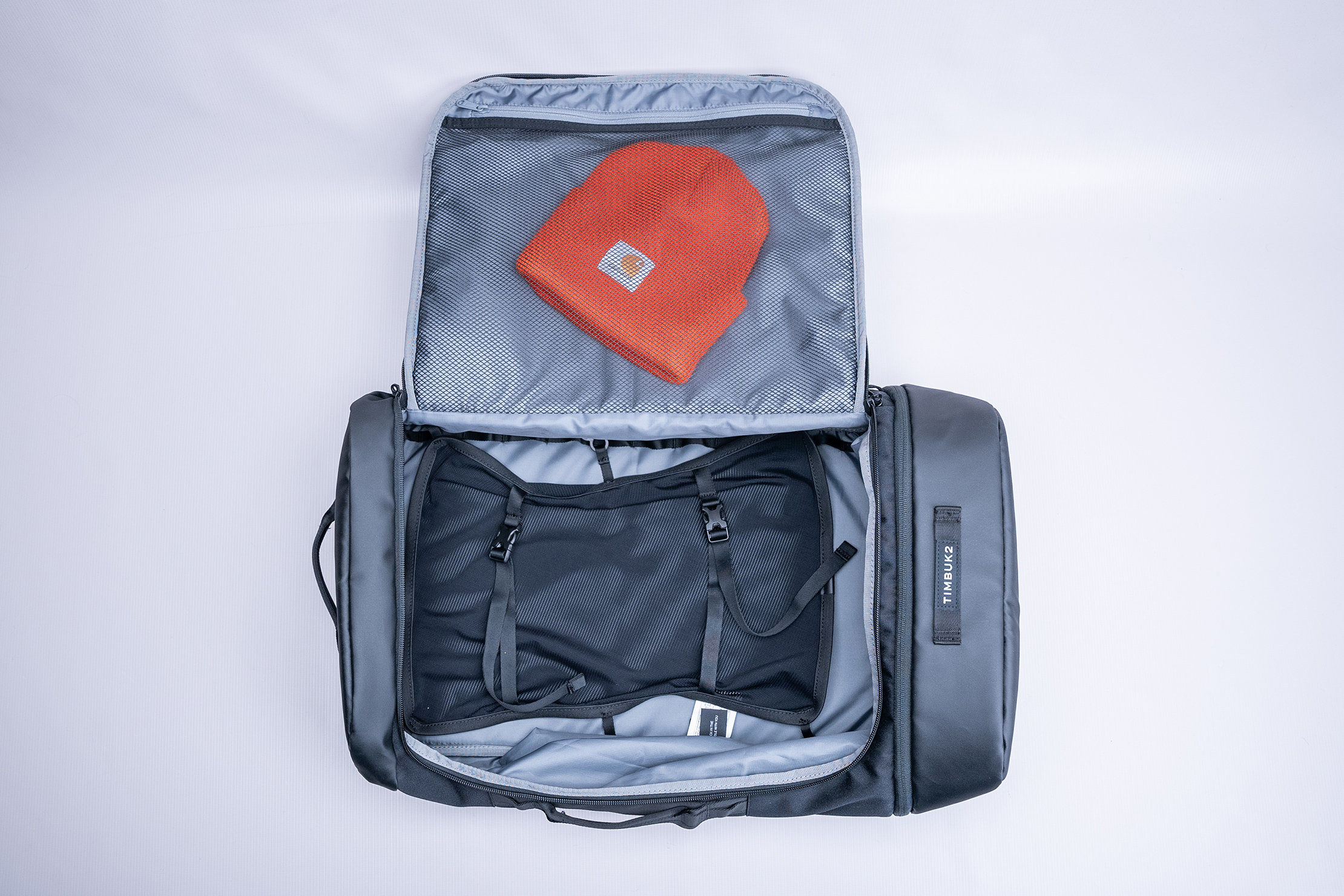
Back to the main space, though, the key feature to look at here is the built-in mesh compression panel. It’s permanently attached on one side with two straps. On the opposite side of the panel are clips that can be attached to corresponding loops on the compartment floor. Clip those in, cinch the straps down, and presto! You have compressed clothing and more optimally centered weight. This is a nice feature for those who don’t use compression packing cubes or want to make more space for even bulkier gear. As mentioned, though, they are permanently attached, so it’s a use it or it-sorta-just-flops-around-in-there scenario.
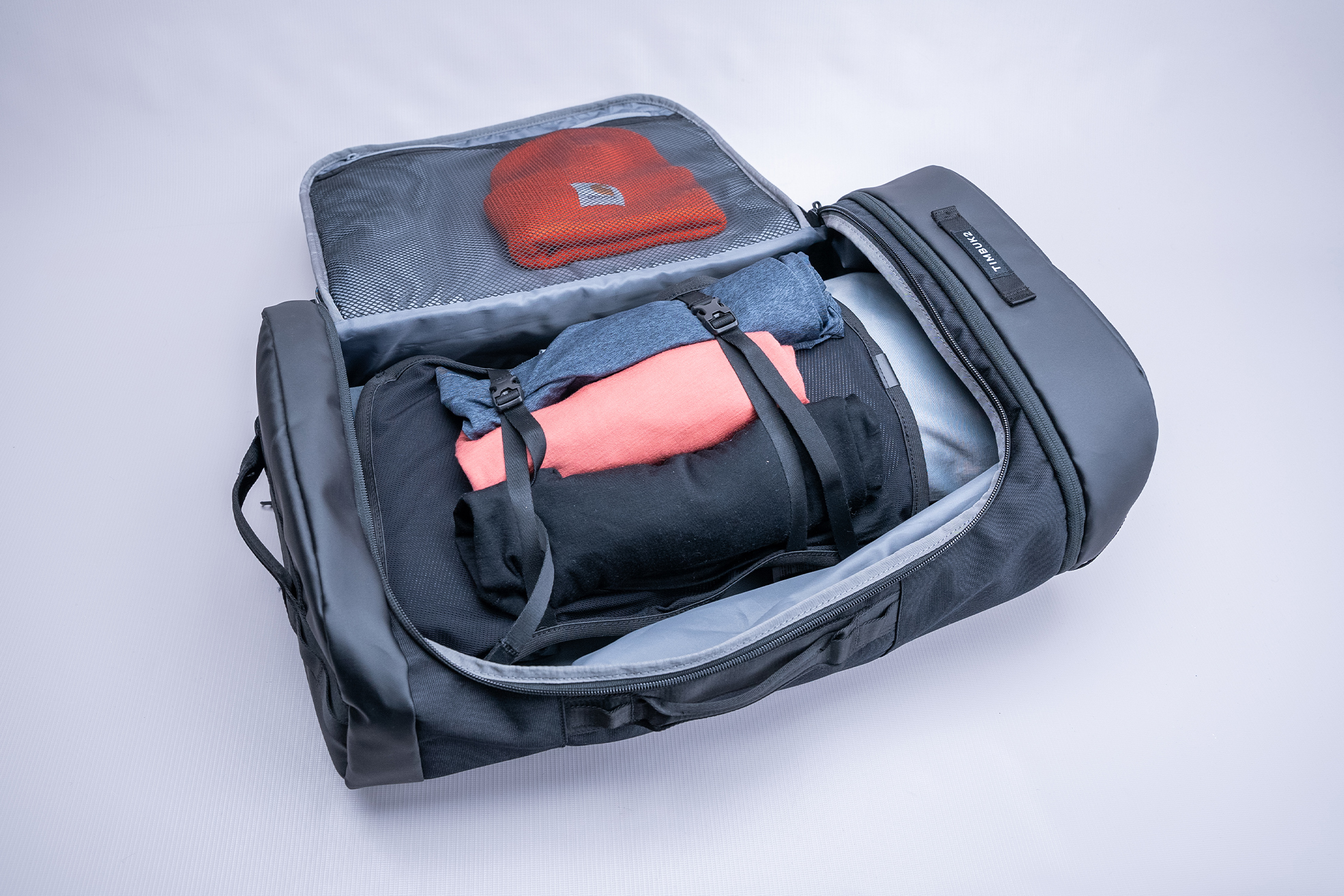
As we pointed out earlier, the water bottle pocket eats up some space once filled. That said, there is plenty of room to go around since there are 38.3 liters of it. It’s just a matter of leaving a bit of headroom on the water bottle pocket’s side so you don’t make inserting a bottle trickier than it already is. As for what fits in the main compartment, we packed at least a week’s worth of clothing inside, though your mileage may vary depending on how fast you go through yours.
Usage Timeline
Condition: Excellent
- Filled with helpful organization
- Multiple carry options—interested to see which is best
- Feels pretty sturdy and durable
Condition: Excellent
- Duffel carry mode feels clunky in practice
- Materials pick up pet hair pretty easily, but it also comes off easily when brushed
- Organization is pretty intuitive, and the rectangular shape is easy to pack


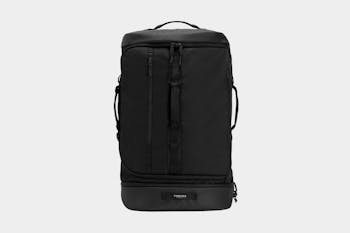






Get your questions about the Timbuk2 Wingman Travel Backpack Duffel answered from our team and the Pro Community right here on the page. Plus, join discussions with other members about gear, guides, and more.
Join Pack Hacker Pro or, Sign In